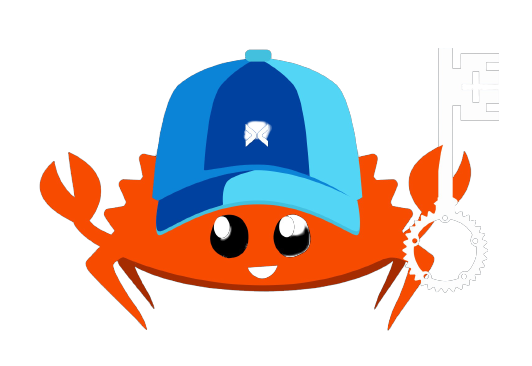Hôm nay chúng ta sẽ học cách biến đổi qua lại giữa chúng. Bài này sẽ khá hữu ích
Biến đổi từ Vec tới String và &str
let src1: Vec<char> = vec!['j','{','"','i','m','m','y','"','}'];
// to String
let string1: String = src1.iter().collect::<String>();
// to str
let str1: &str = &src1.iter().collect::<String>();
// to vec of byte
let byte1: Vec<u8> = src1.iter().map(|c| *c as u8).collect::<Vec<_>>();
println!("Vec<char>:{:?} | String:{:?}, str:{:?}, Vec<u8>:{:?}", src1, string1, str1, byte1);
Ở dòng let string1: String = src1.iter().collect::<String>();
// Duyệt qua và gọi hàm collect(). Vì kiểu trả về là T nên ta dùng cú pháp tuborfish ::<> để chỉ rõ kiểu T trả về là gì
Hoặc có thể dùng map để chuyển đổi tới Vec của các bytes
Khởi tạo từ mảng bytes
// -- FROM: vec of bytes --
// in rust, this is a slice
// b - byte, r - raw string, br - byte of raw string
let src2: Vec<u8> = br#"e{"ddie"}"#.to_vec();
// to String
// from_utf8 consume the vector of bytes
let string2: String = String::from_utf8(src2.clone()).unwrap();
// to str
let str2: &str = str::from_utf8(&src2).unwrap();
// to vec of chars
let char2: Vec<char> = src2.iter().map(|b| *b as char).collect::<Vec<_>>();
println!("Vec<u8>:{:?} | String:{:?}, str:{:?}, Vec<char>:{:?}", src2, string2, str2, char2);
Giải thích: br# là bắt đầu mảng raw byte, gọi hàm to_vec() để chuyển đổi sang kiểu Vecfrom_utf8 --> trả về String
Một số giải thích ở đây
pub fn from_utf8(vec: Vec<u8, Global>) -> Result<String, FromUtf8Error>
Converts a vector of bytes to a String.
A string (String) is made of bytes (u8), and a vector of bytes (Vec<u8>) is made of bytes, so this function converts between the two. Not all byte slices are valid Strings, however: String requires that it is valid UTF-8. from_utf8() checks to ensure that the bytes are valid UTF-8, and then does the conversion.
If you are sure that the byte slice is valid UTF-8, and you don’t want to incur the overhead of the validity check, there is an unsafe version of this function, from_utf8_unchecked, which has the same behavior but skips the check.
This method will take care to not copy the vector, for efficiency’s sake.
If you need a &str instead of a String, consider str::from_utf8.
The inverse of this method is into_bytes.
Tương tự với kiểu &str
let str2: &str = str::from_utf8(&src2).unwrap();
Từ String
// -- FROM: String --
let src3: String = String::from(r#"o{"livia"}"#);
let str3: &str = &src3;
let char3: Vec<char> = src3.chars().collect::<Vec<_>>();
let byte3: Vec<u8> = src3.as_bytes().to_vec();
println!("String:{:?} | str:{:?}, Vec<char>:{:?}, Vec<u8>:{:?}", src3, str3, char3, byte3);
String gọi hàm as_bytes() hoặc chars()
Từ &str
// -- FROM: str --
let src4: &str = r#"g{'race'}"#;
let string4 = String::from(src4);
let char4: Vec<char> = src4.chars().collect();
let byte4: Vec<u8> = src4.as_bytes().to_vec();
println!("str:{:?} | String:{:?}, Vec<char>:{:?}, Vec<u8>:{:?}", src4, string4, char4, byte4);
Tương tự ta cũng có 2 hàm giống như String: as_bytes và chars
Hi vọng là biến đổi qua lại như thế này bạn sẽ không gặp khó khăn khi gặp kiểu này
Còn về ý nghĩa của từng kiểu, cần học và cân nhắc khi sử dụng.
 bichkhe
bichkhe 